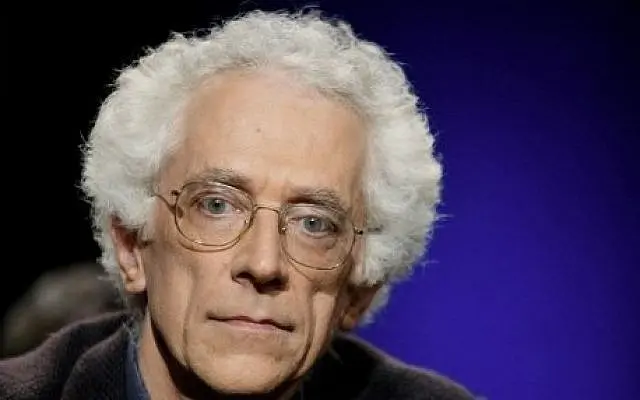Structuralism is a transformative and influential theory that shifted the paradigms of interpreting texts. Emerging in the mid-20th century, it brought a new lens to literary analysis, one that focuses on the underlying structures rather than the superficial content. Rooted in the field of linguistics, particularly in the theories of Ferdinand de Saussure, it proposes that the meaning within literature is constructed not merely through individual elements but through the relationships and structures they form within the text.
This theoretical approach revolutionized the understanding of narratives, language, and culture within literary studies. It suggested that all elements of human culture, including literature, can be understood as part of a system of signs. This blog delves into the depths of the theory, exploring its foundational principles, the intellectual backdrop that led to its rise, and the significant figures who shaped this movement. We will examine the impact of Structuralism on literary criticism, its critical reception, and its lasting legacy in modern literary theory.
Understanding Structuralism
The Paradigm Shift in Literary Criticism
Structuralism in literature represented a paradigm shift from traditional approaches that focused on historical, biographical, or thematic aspects of texts. Instead, it introduced a method that viewed literature and culture through the lens of underlying structures.
1. The Linguistic Foundation:
- Structuralism’s roots lie in linguistics, especially the work of Swiss linguist Ferdinand de Saussure. Saussure’s distinction between ‘langue’ (the system of language) and ‘parole’ (speech acts) laid the groundwork for it. He posited that meaning is derived not from individual words (signs) but from their relationships and differences within the language system.

2. Literature as a System of Signs:
- Following Saussure, Structuralists approached literature as a system of signs. They argued that just as language operates through differences and relationships between signs, literary texts create meaning through their structure – the relationship between various elements like characters, themes, and narrative techniques.
3. The Role of Binary Oppositions:
- A key concept in Structuralism is binary oppositions – the idea that elements in literature often exist in pairs of opposites (e.g., good/evil, nature/culture). These oppositions were seen as fundamental in organizing and interpreting texts.

4. Emphasis on the Reader’s Role:
- It also shifted focus to the reader’s role in creating meaning. It suggested that readers interpret texts based on their understanding of these underlying structures, making the act of reading a participatory and interpretive process.
5. From Content to Form:
- Moving away from the content-centric approach of previous literary criticism, Structuralism emphasized the form and underlying structure of texts. The idea was to uncover the ‘grammar’ of literature, the rules and conventions that govern the creation of meaning.
Through these principles, Structuralism offered a new way to analyze and understand literature, one that focused on the unseen structures and systems that underpin texts. It marked a significant shift in literary theory, setting the stage for subsequent movements and continuing to influence literary criticism today.
Historical Context of Structuralism’s Emergence
The Intellectual Milieu of Mid-20th Century
The emergence of Structuralism as a dominant literary theory in the mid-20th century was deeply rooted in the intellectual and cultural shifts of the time. This period saw a move towards a more scientific and systematic approach to humanities and social sciences, influenced by developments in linguistics, anthropology, and psychoanalysis.
1. The Influence of Linguistics:
- Ferdinand de Saussure’s course in general linguistics, posthumously published in 1916, laid the foundational concepts for the theory. His ideas about language as a system of interdependent signs changed how linguists, and later Structuralists, viewed the construction of meaning.
2. Anthropological and Psychoanalytic Contributions:
- Structuralism was also influenced by the field of anthropology, particularly the work of Claude Lévi-Strauss, who applied Saussure’s concepts to cultural phenomena. Similarly, the psychoanalytic theories of Freud and Lacan, which emphasized underlying structures in the human psyche, contributed to Structuralism’s development.
3. The Post-War Intellectual Climate:
- The aftermath of World War II brought about a reevaluation of many traditional beliefs and ideologies. In this climate, Structuralism offered a new, more objective way to understand literature and culture, free from the biases of history and biography.

4. Reaction Against Existentialism and Humanism:
- It arose partly in response to the dominance of existentialism and humanism in intellectual circles, particularly in France. It challenged the focus on individual experience and subjective interpretation, proposing a more scientific analysis of texts and culture.
5. Cross-Disciplinary Influences:
- The mid-20th century was a time of increased interaction between different disciplines. Structuralism’s development was marked by its interdisciplinary nature, drawing from and influencing various fields like literary theory, anthropology, linguistics, and psychology.
This historical context set the stage for Structuralism’s rise as a transformative approach in literary criticism. It reflected a broader shift towards examining the underlying systems and structures in various domains of knowledge.
Key Concepts and Theories of Structuralism
Structuralism introduced a set of innovative concepts and theories that reshaped the study of literature by focusing on the underlying structures that govern the creation and interpretation of texts.
1. The Sign, Signifier, and Signified:
- Central to the theory is Saussure’s concept of the sign, which consists of the ‘signifier’ (the form of the word or symbol) and the ‘signified’ (the concept it represents). This relationship highlights how meaning is constructed in language and, by extension, literature.

2. Binary Oppositions:
- It emphasized the role of binary oppositions in creating meaning within texts. These oppositions (e.g., light/dark, male/female) are seen as fundamental structures that help organize and interpret literary works.
3. The Structure of Narratives:
- Structuralists proposed that narratives follow certain universal structures or patterns. This concept was influenced by the work of Russian folklorist Vladimir Propp, who identified recurrent narrative elements in folktales, and by French anthropologist Claude Lévi-Strauss’s analysis of myths.
4. The Death of the Author:
- Roland Barthes, a key figure in the theory, introduced the idea of the ‘death of the author’, suggesting that the author’s intentions and biographical context should not dictate the interpretation of a text. Instead, the focus should be on the reader’s interaction with the structure of the text.

5. The Role of the Reader:
- Structuralism shifted the focus from authorial intent to the reader’s role in interpreting texts. It posited that readers decode the structures within a text based on their cultural and linguistic knowledge, making each reading experience unique.
6. The Structural Analysis of Culture:
- Beyond literature, Structuralism was applied to the study of culture at large. Lévi-Strauss, for instance, used structural analysis to study kinship, myths, and rituals, suggesting that all cultural phenomena could be understood as part of a system of signs.
These concepts revolutionized literary criticism by proposing that the meaning of a text lies not in its isolated elements but in the overall structure and the relationships between its parts. Structuralism’s analytical tools offered a new way to dissect and understand the complexities of literature and its role in culture.
Major Contributors to Structuralism
Structuralism in literary theory was shaped by several key figures, each bringing unique insights and contributions that defined and expanded the movement.
1. Ferdinand de Saussure (1857-1913):
- Saussure is often considered the father of Structuralism. His lectures, compiled posthumously as “Course in General Linguistics,” laid the foundation for Structuralism with his ideas about language as a system of interrelated signs.
- His concepts of the ‘signifier’ and ‘signified’, and the arbitrary nature of the sign, were crucial in developing Structuralist thought.
2. Claude Lévi-Strauss (1908-2009):
- An anthropologist by training, Lévi-Strauss applied Saussure’s ideas to anthropology. His analysis of myths and kinship systems using Structuralist methods significantly influenced literary criticism.
- His works, such as “The Raw and the Cooked,” demonstrated how Structuralist approaches could be used to decode cultural phenomena.
3. Roland Barthes (1915-1980):
- Barthes was instrumental in applying Structuralist theory to literature and culture. His concept of the ‘death of the author’ and the emphasis on the reader’s role in creating meaning were groundbreaking.
- In his famous essay “The Death of the Author,” Barthes argued against traditional author-centric interpretations of texts, focusing instead on the text itself and the reader’s role.
4. Roman Jakobson (1896-1982):
- A linguist and literary theorist, Jakobson extended Structuralism to the study of poetics and phonology. His communication model, which includes six factors of communication, was influential in literary theory.
- His analysis of the functions of language enriched the Structuralist understanding of how language operates in literature.
5. Tzvetan Todorov (1939-2017):
- Todorov contributed to the Structuralist theory of narrative. His work in defining the categories of narrative structure and his analysis of narrative genres were significant in the field.
- His book “The Poetics of Prose” (1971) explored the mechanisms of narrative and genres, providing tools for literary analysis.

These theorists collectively shaped Structuralism, providing a framework for understanding literature not as a mere reflection of reality but as a complex system of signs and structures. Their works continue to be fundamental in literary studies, influencing both the analysis and teaching of literature.
Impact and Critique of Structuralism
Structuralism’s influence on literary criticism and the arts was profound, reshaping how texts and cultural phenomena are analyzed and interpreted. However, it also faced significant critiques and challenges.
1. Impact on Literary Criticism:
- Structuralism introduced a new way of reading and analyzing texts, focusing on the structures and systems that underlie and produce meaning. This approach influenced various areas of literary studies, including narrative theory, genre studies, and criticism.
- It also encouraged a more interdisciplinary approach in the humanities, with its methodologies being applied to fields like anthropology, art criticism, and cultural studies.
2. Influence on Subsequent Theories:
- Structuralism laid the groundwork for several later critical theories, most notably Poststructuralism and Deconstruction. These theories built upon and sometimes reacted against Structuralist ideas, particularly regarding the stability and interpretation of structures.
3. Critiques of Structuralism:
- A major critique of Structuralism was its perceived neglect of historical and social context in analyzing texts. Critics argued that by focusing solely on structures, Structuralism overlooked the influence of cultural and historical factors on literature.
- The theory was also criticized for its deterministic nature, implying that texts and cultural phenomena are governed by fixed structures, which some saw as limiting the scope for individual interpretation and creativity.
4. The Turn to Poststructuralism:
- In response to some of these critiques, particularly the idea of fixed structures, Poststructuralism emerged. Poststructuralists like Jacques Derrida questioned the rigidity and binary nature of Structuralist analysis, arguing for more fluid and open-ended interpretations of texts.
5. Enduring Influence:
- Despite these critiques, the influence of Structuralism in literary studies remains significant. Its methodologies and concepts, particularly the analytical focus on the structure of texts, continue to inform contemporary literary criticism and theory.
Structuralism, with its emphasis on the deep structures underlying literary texts, brought a scientific rigor to literary criticism. While it faced challenges and evolved into new theoretical forms, its impact on the study of literature and culture has been enduring and transformative.
Legacy and Modern Perspectives on Structuralism
The legacy of Structuralism in literary theory extends far beyond its peak in the mid-20th century, continuing to influence contemporary literary criticism and theory.
1. Structuralism’s Enduring Concepts:
- Structuralism’s core concepts, such as the analysis of texts as systems of signs and the focus on binary oppositions, remain influential in literary studies. These ideas have been adapted and expanded, continuing to offer valuable tools for textual analysis.
2. Influence on Contemporary Literary Theories:
- Structuralism paved the way for various modern literary theories, including Poststructuralism, Deconstruction, and Cultural Studies. These fields have built upon, critiqued, and diversified the Structuralist approach, particularly in terms of text interpretation and the role of the reader.
3. Structuralism in the Classroom:
- In academic settings, Structuralist methods are still prevalent in the teaching of literature. Concepts like narrative structure and the analysis of literary devices are foundational in many literary curricula.
4. Structuralism and Digital Humanities:
- The advent of digital humanities has seen a resurgence in Structuralist methods. Computational analysis of texts, for example, often employs Structuralist principles to examine patterns and structures within literary corpora.
5. Contemporary Critiques and Adaptations:
- While Structuralism continues to be a subject of critique, particularly regarding its perceived rigidity and neglect of historical context, contemporary theorists often adapt Structuralist ideas to more nuanced and context-aware approaches.
6. Ongoing Scholarly Interest:
- Structuralism remains a topic of scholarly interest, with ongoing research and publications exploring its historical context, development, and impact on literary theory.
In conclusion, Structuralism’s legacy is marked by its profound impact on the way literature is analyzed, understood, and taught. Its principles have been instrumental in shaping contemporary literary criticism, providing a foundation for newer theories and continuing to offer valuable insights into the study of literature and culture.
Table: Structuralism in Comparative Perspective
| Aspect | Structuralism | Russian Formalism | Poststructuralism |
|---|---|---|---|
| Focus | Underlying structures in texts | Textual form and structure | Instability of meaning |
| Key Concepts | Binary oppositions, sign systems | Literariness, defamiliarization | Deconstruction, intertextuality |
| Analysis of Language | Language as a system of signs | Focus on literary language | Fluidity and plurality of language |
| Role of the Author | Less emphasized | Marginalized in favor of the text | Author’s intent deconstructed |
| Role of the Reader | Active in interpreting structures | Less emphasis on reader’s role | Central, active in creating meaning |
| Methodology | Systematic, structural analysis | Close reading, focus on form | Critical analysis, focus on ambiguity |
Conclusion
Structuralism in literary theory marked a turning point in the way texts are understood and analyzed. Its emphasis on underlying structures and systems of signs revolutionized literary criticism, paving the way for a range of subsequent theories. Though it has evolved and faced critiques, Structuralism’s legacy continues to influence modern literary studies, underscoring the enduring significance of its analytical tools and concepts.







